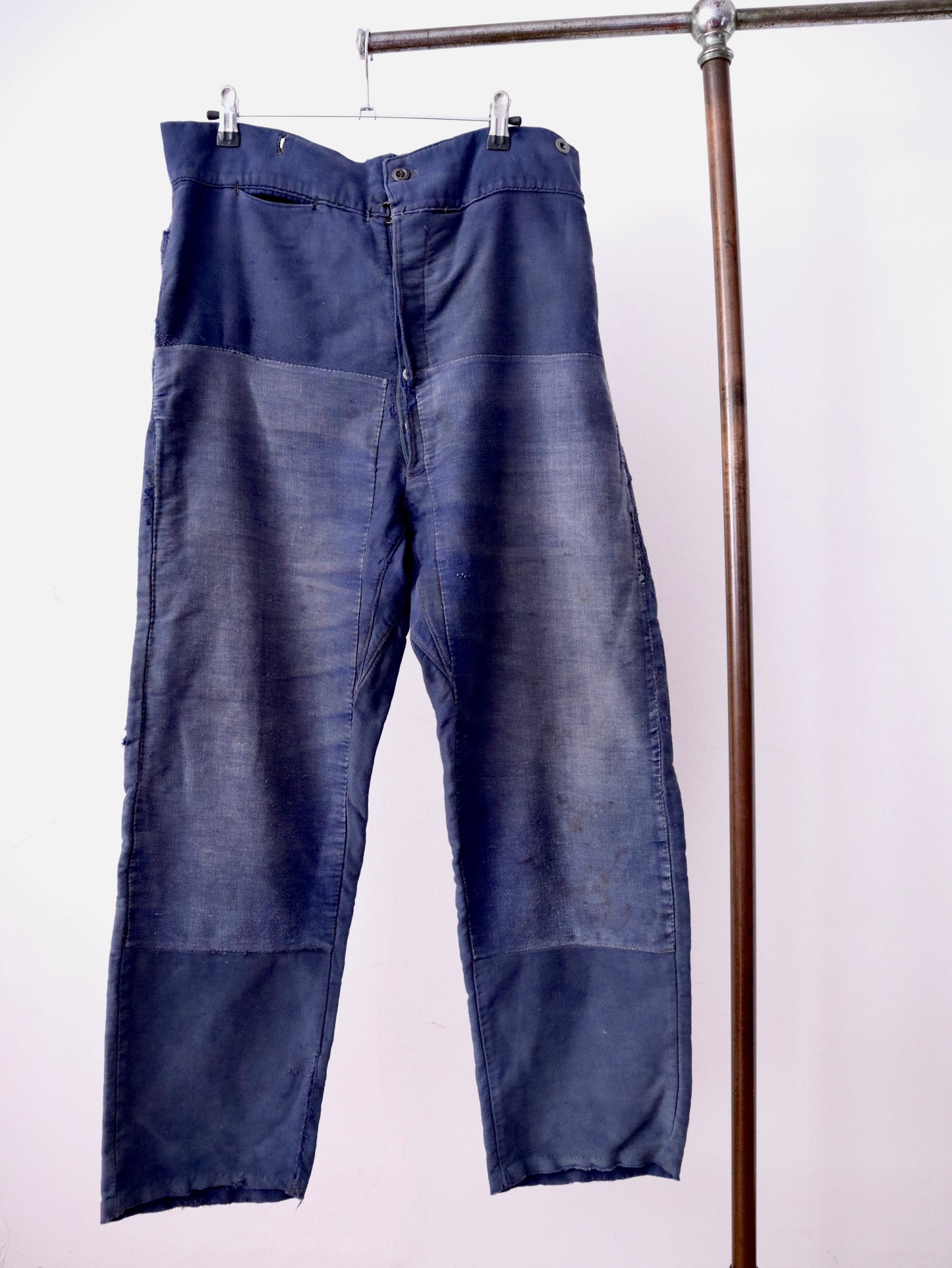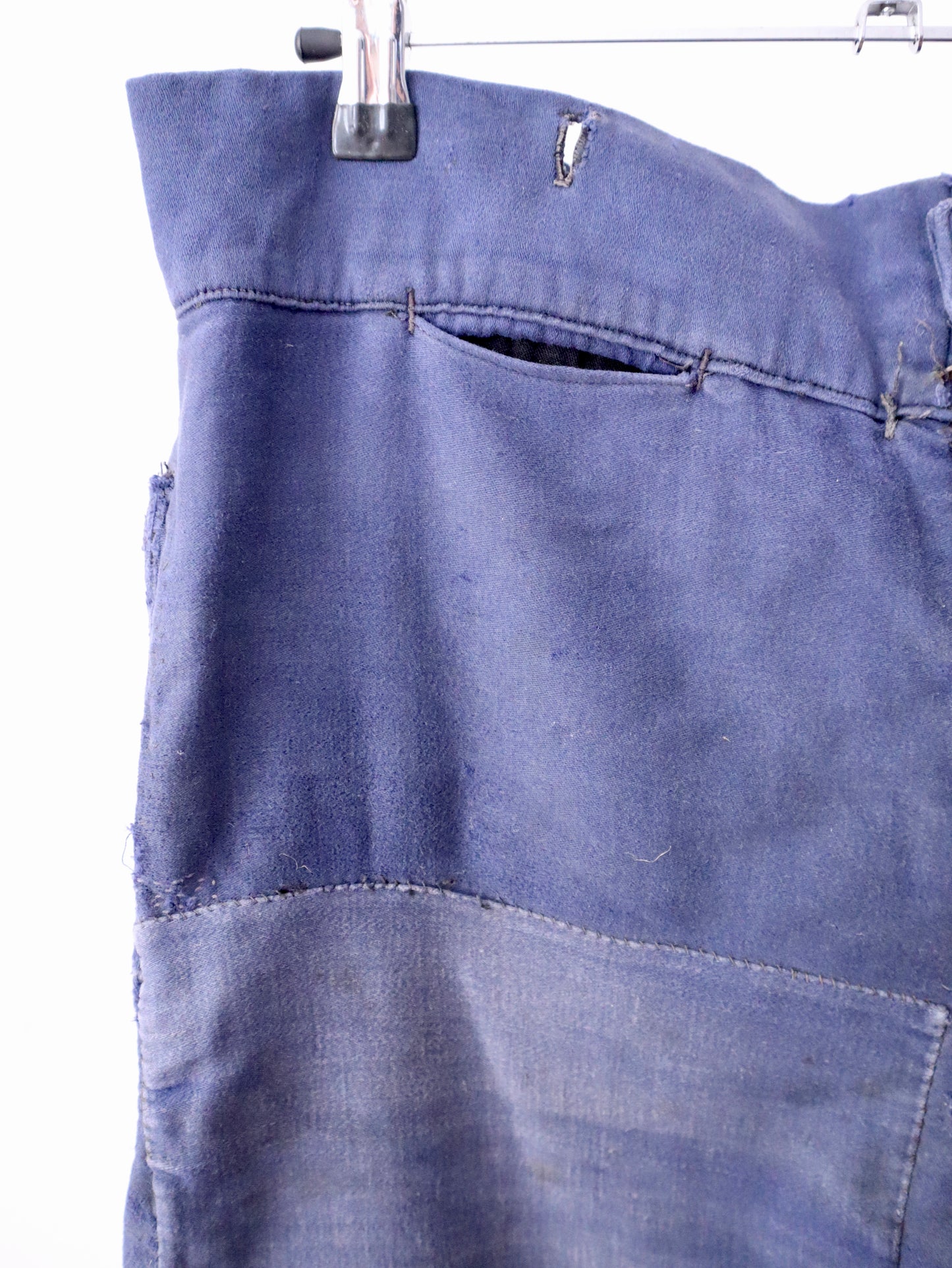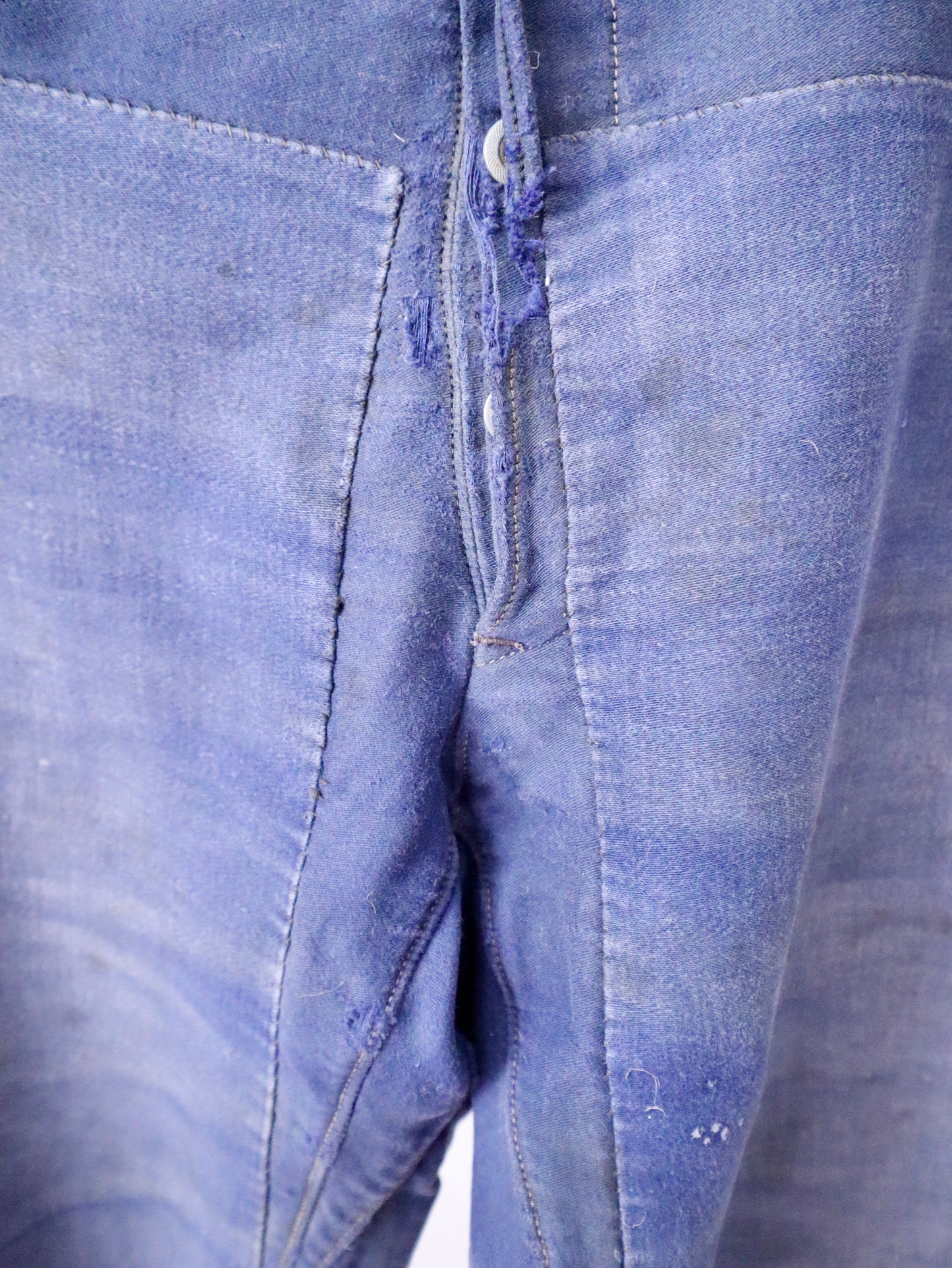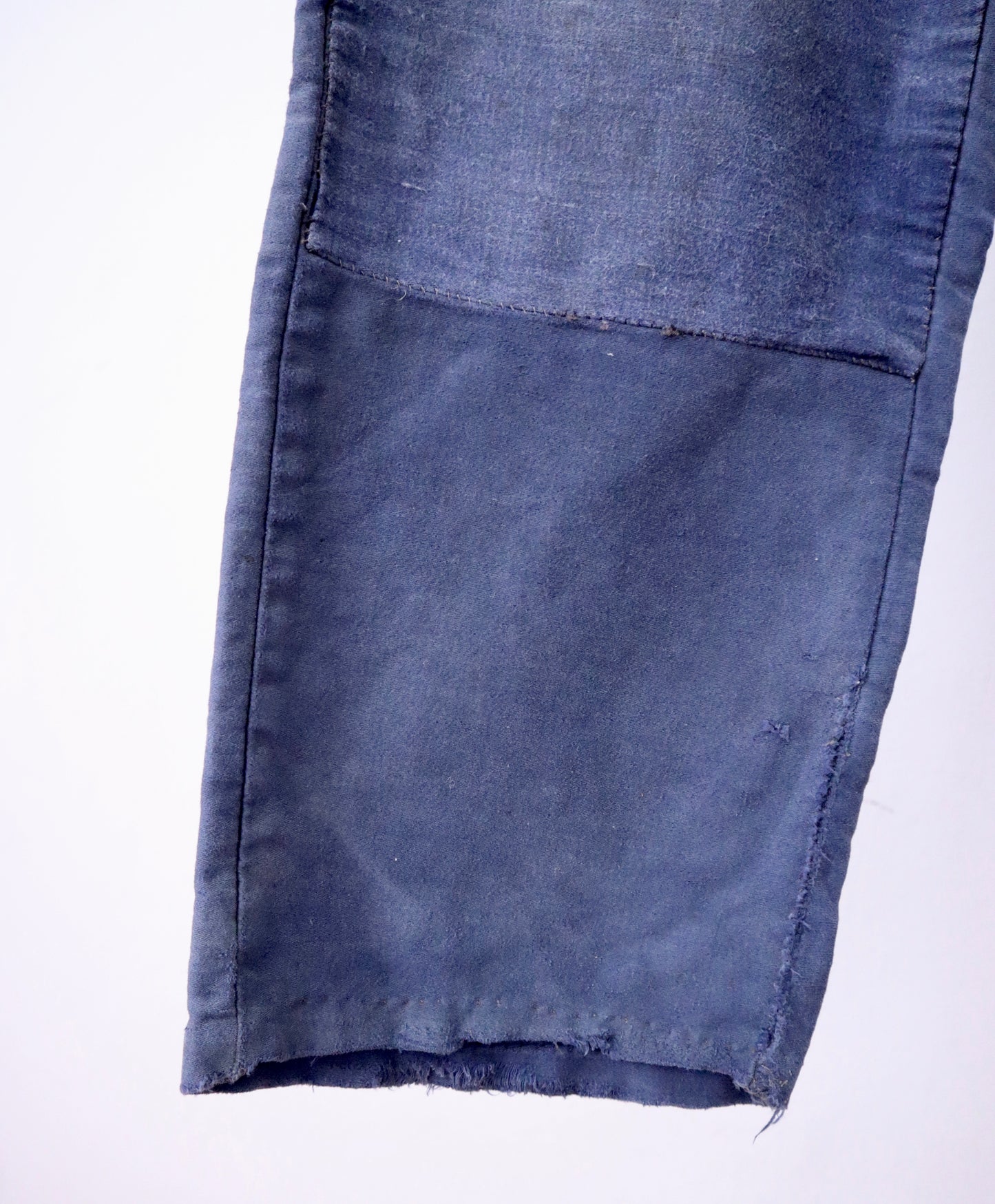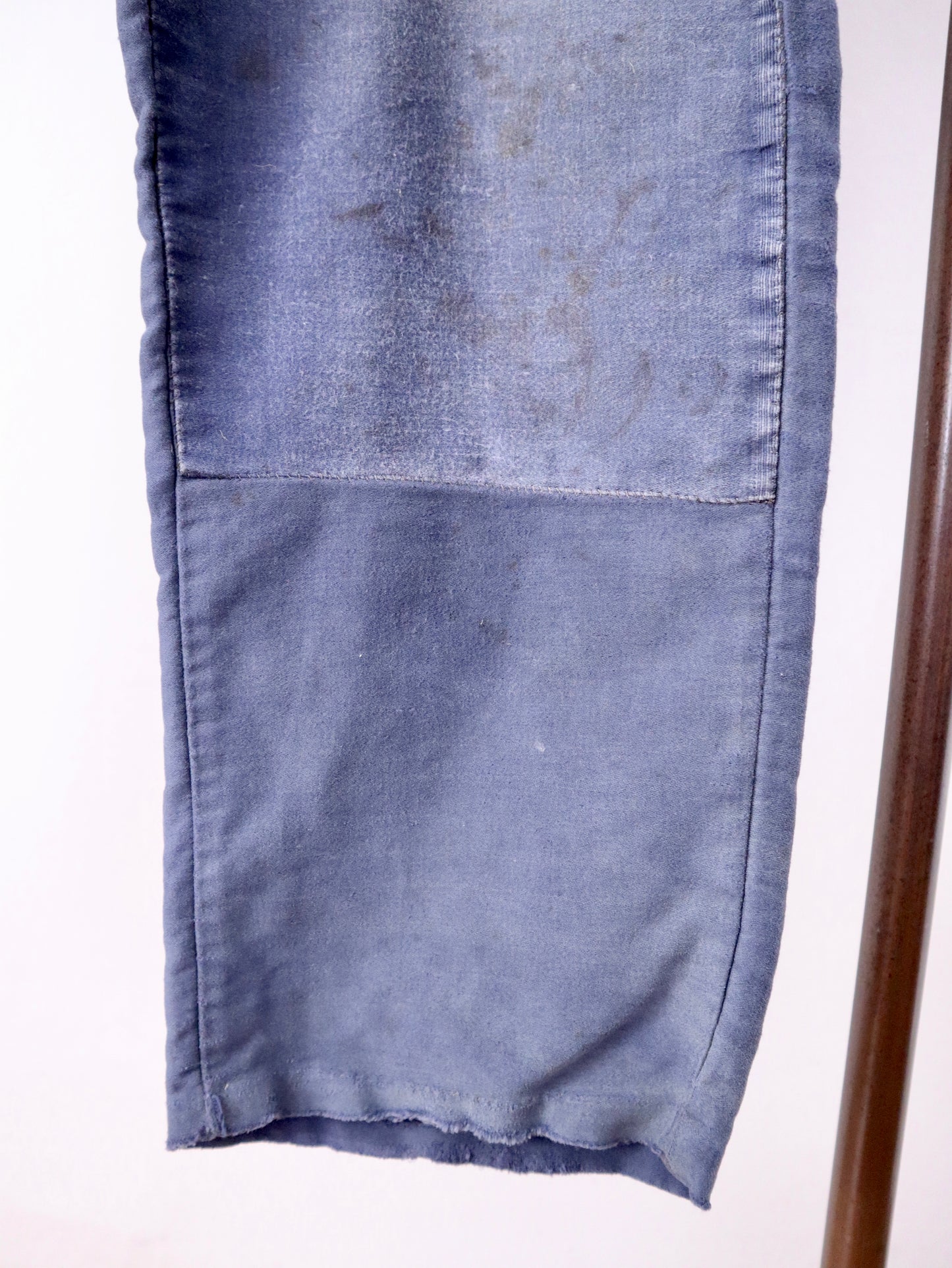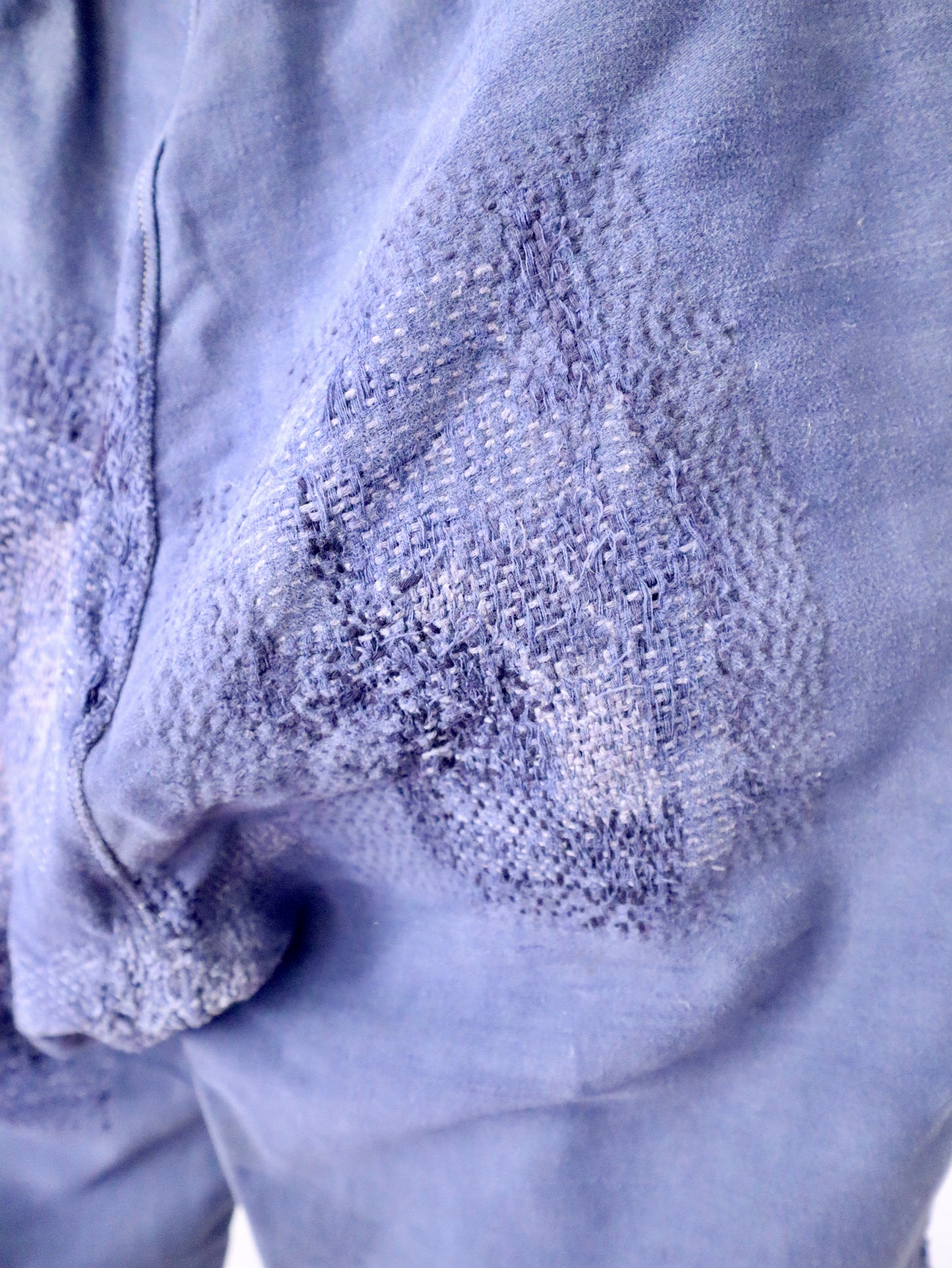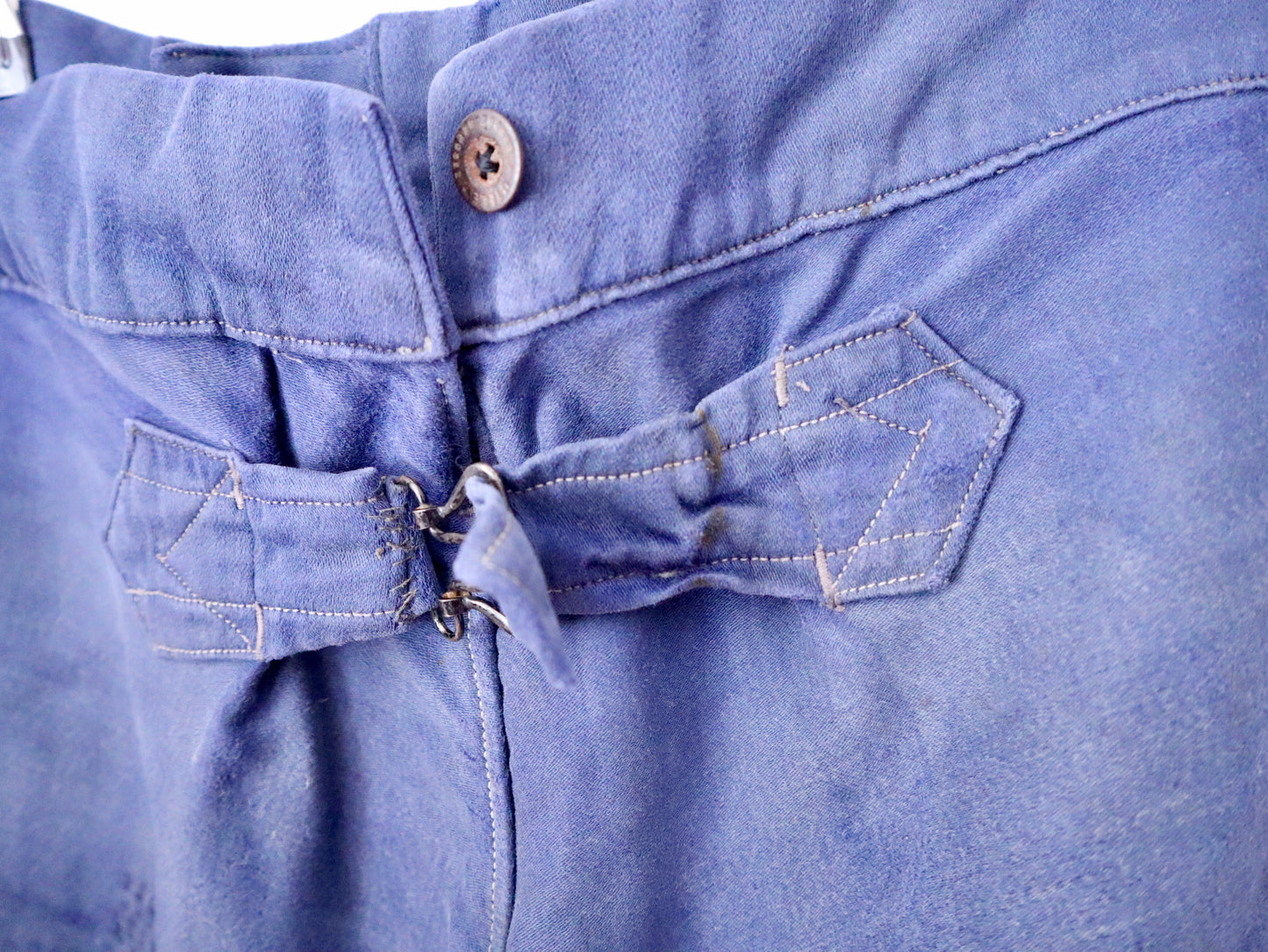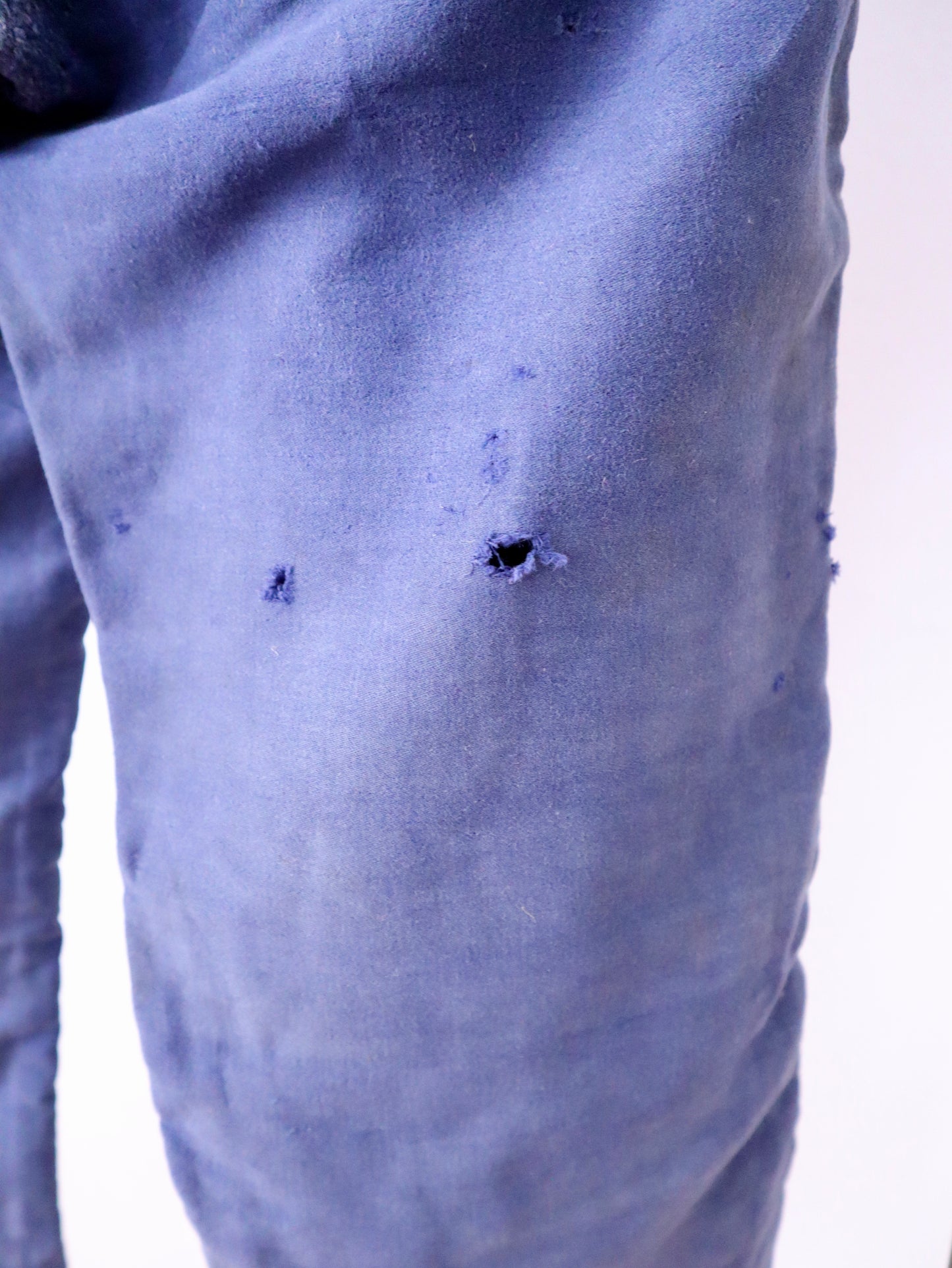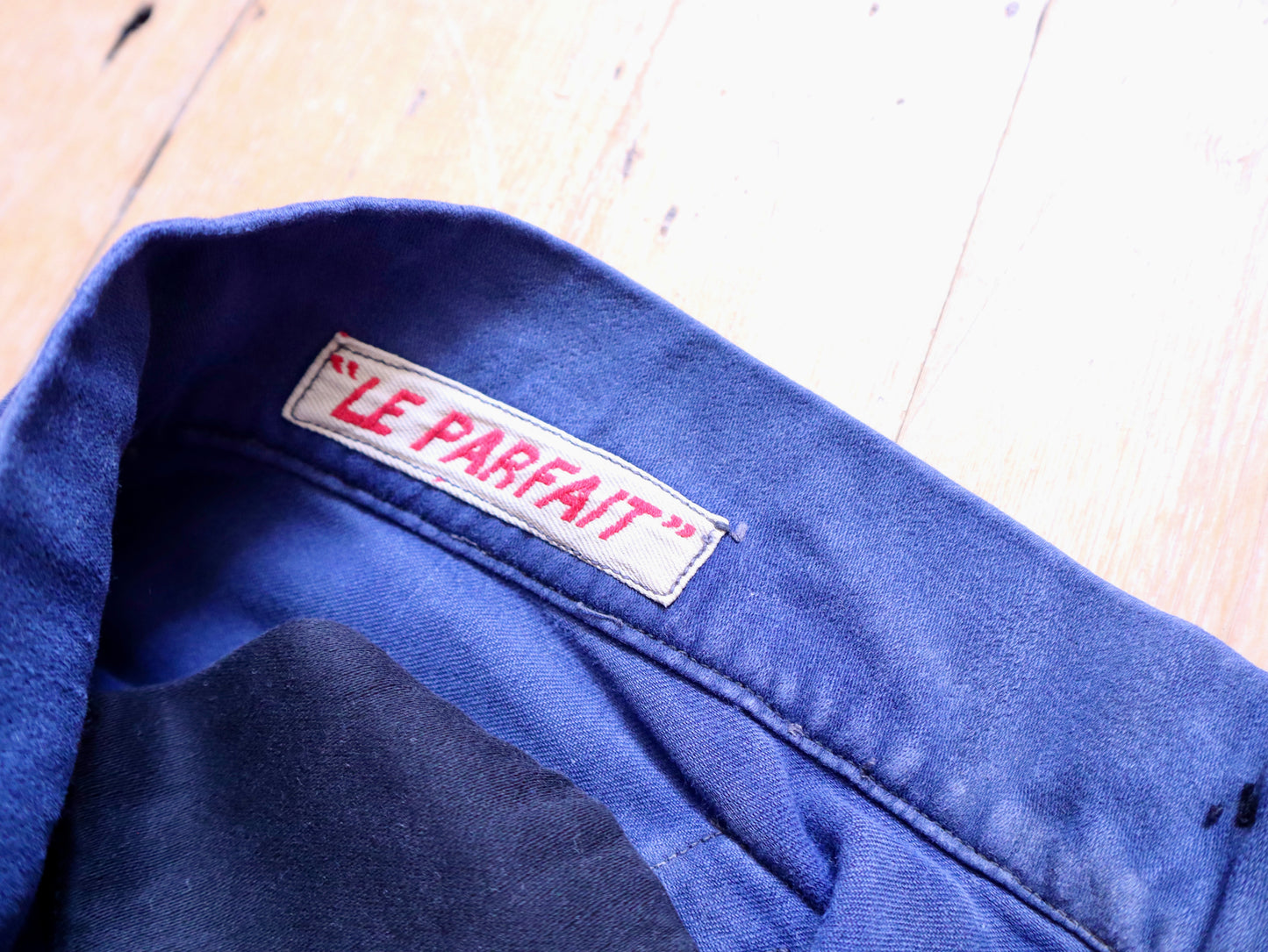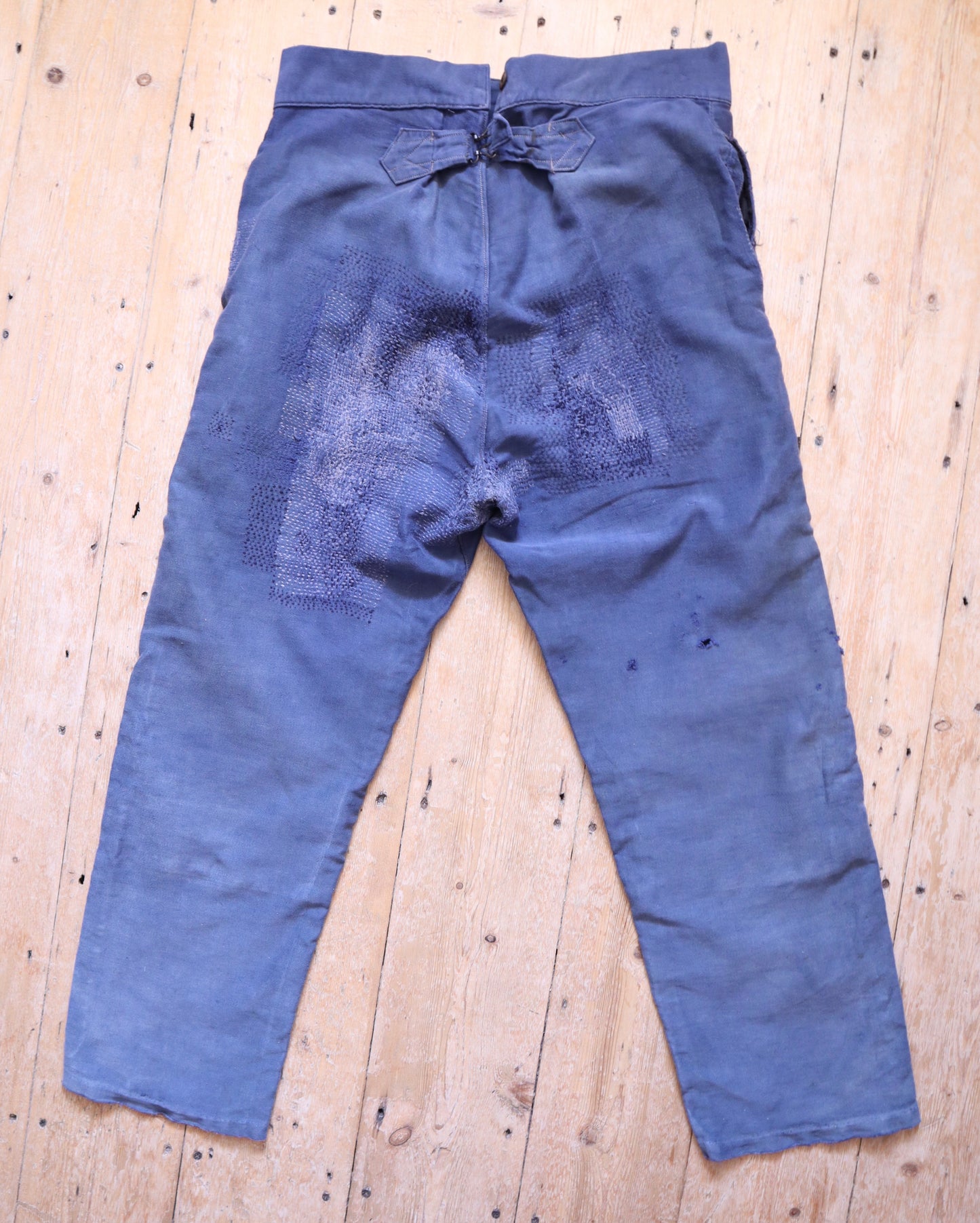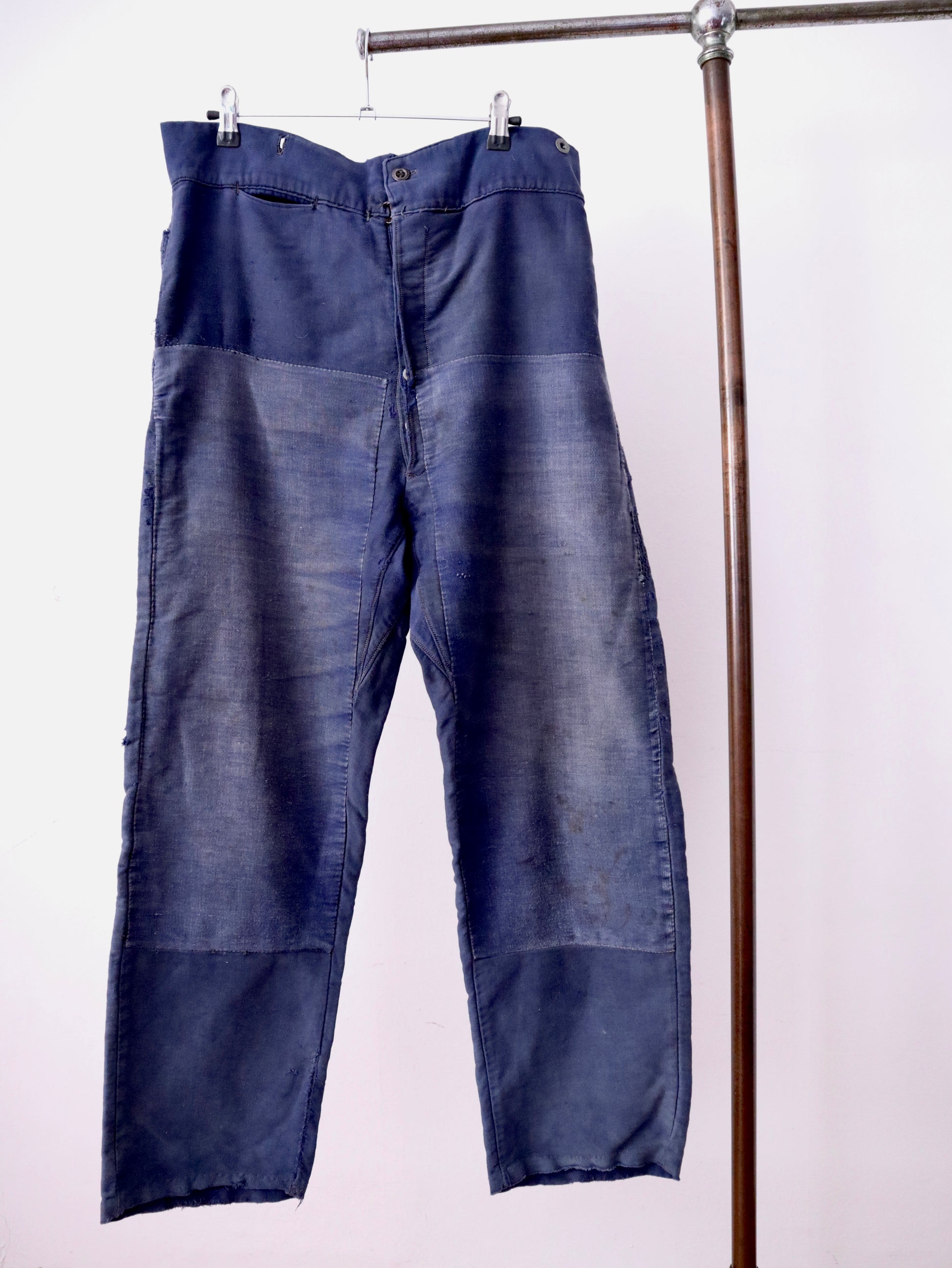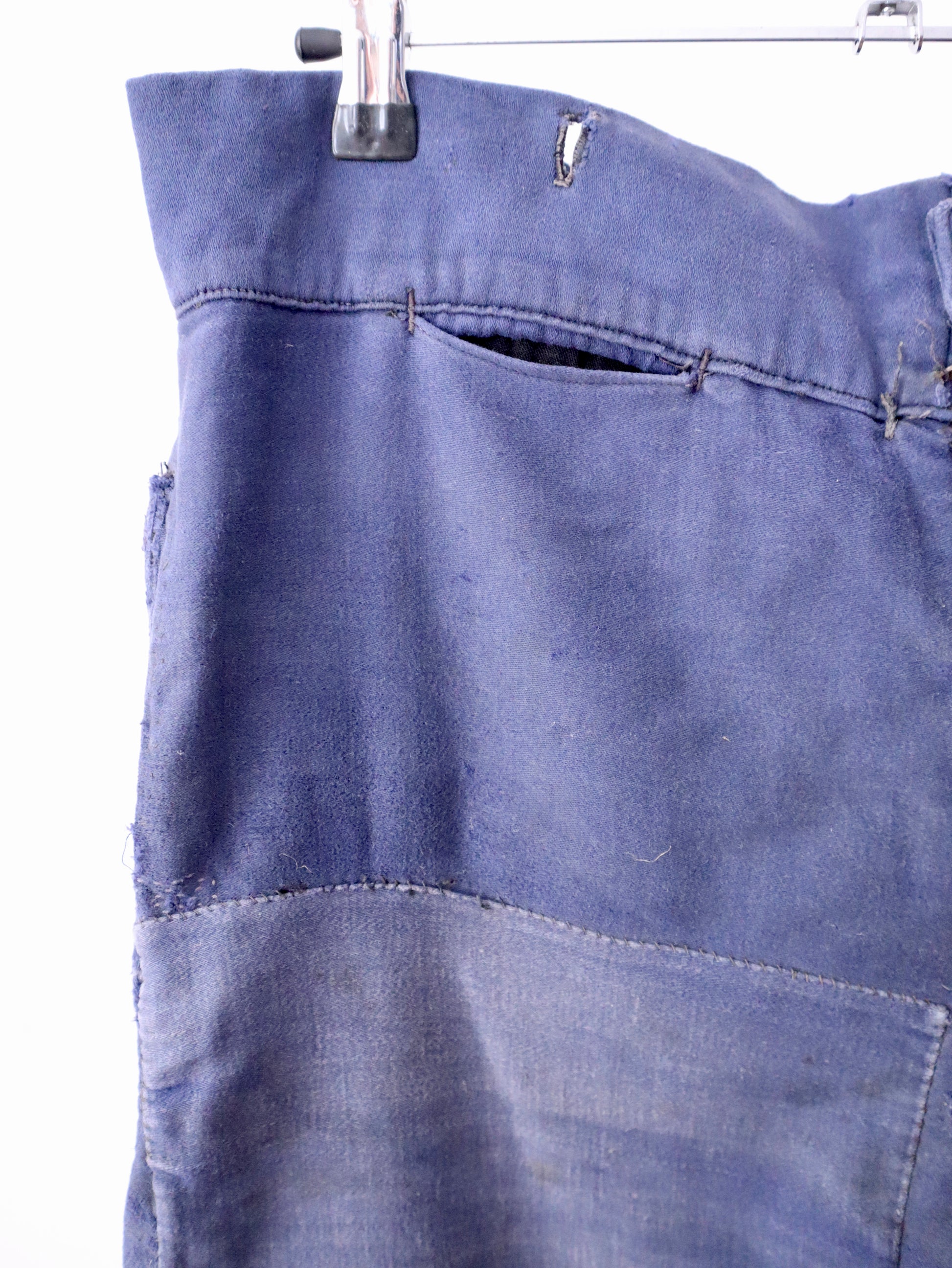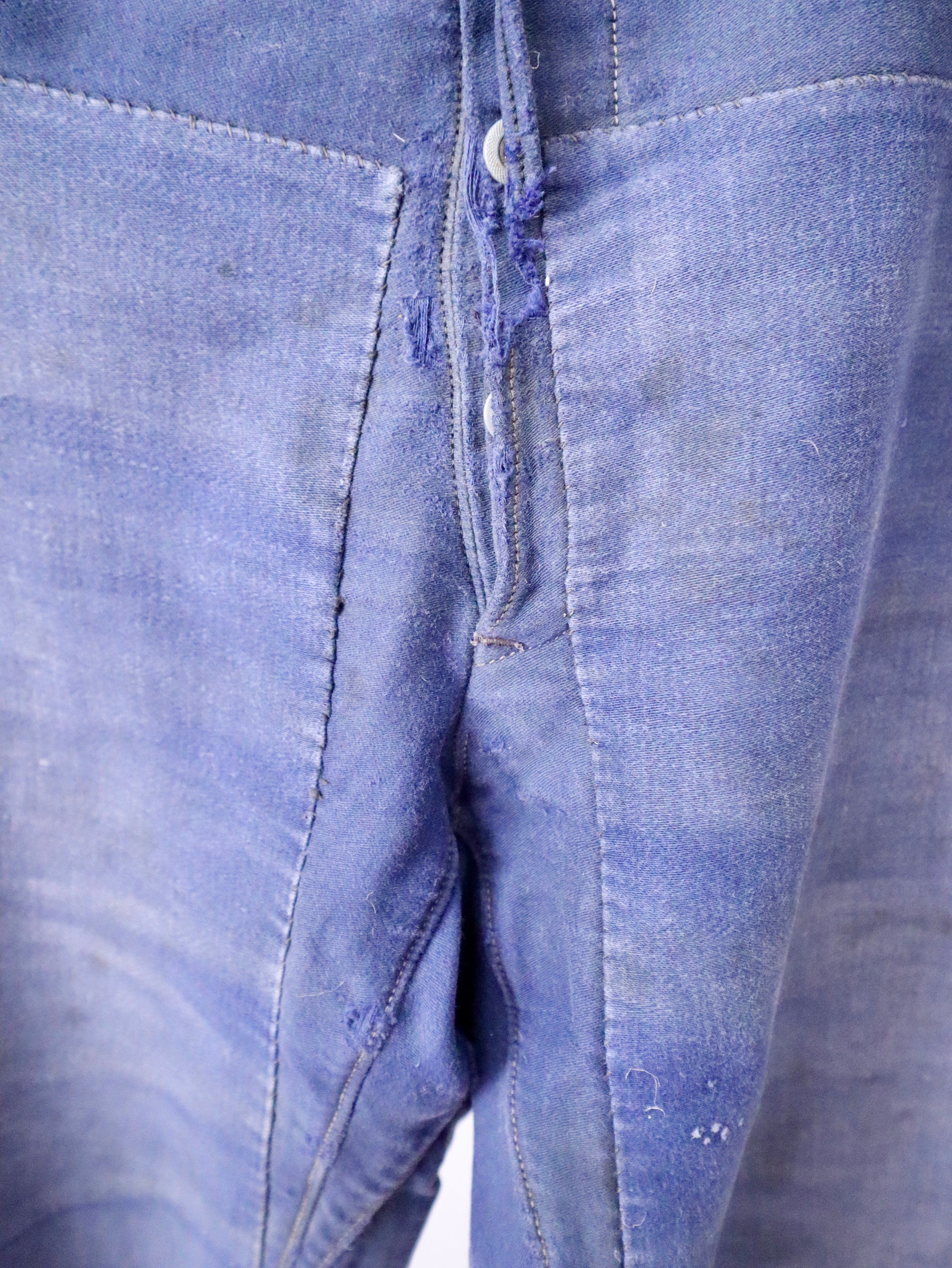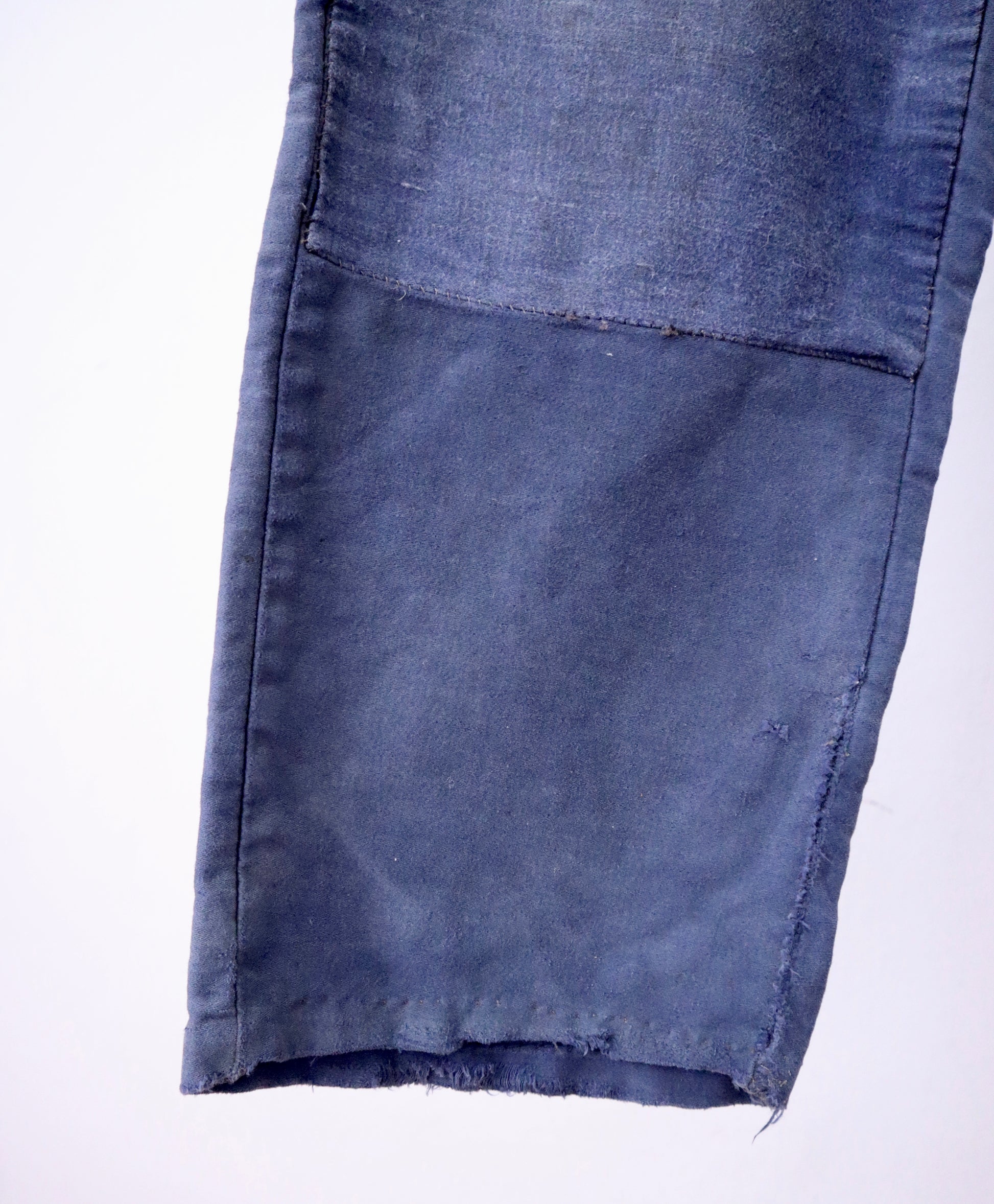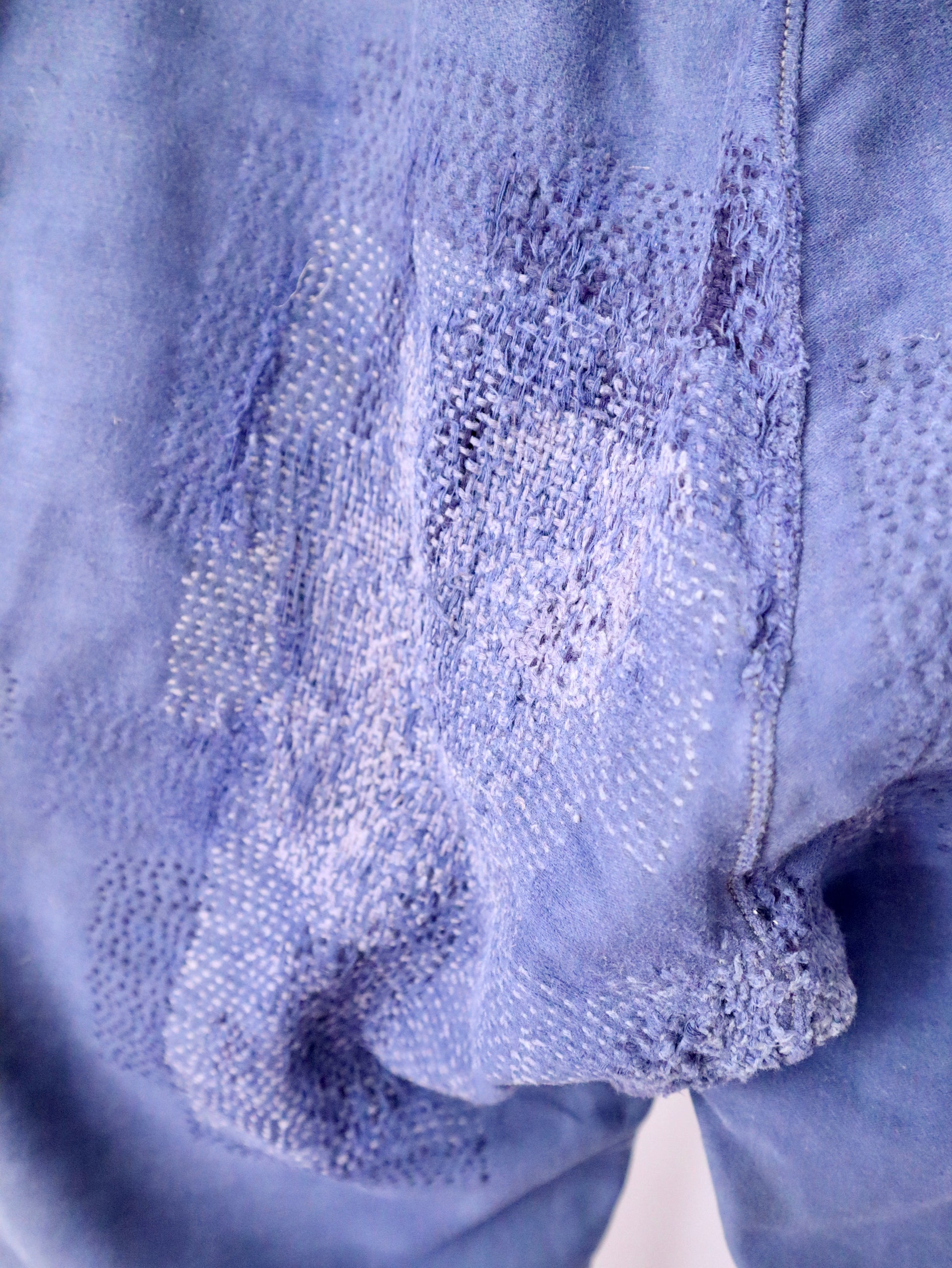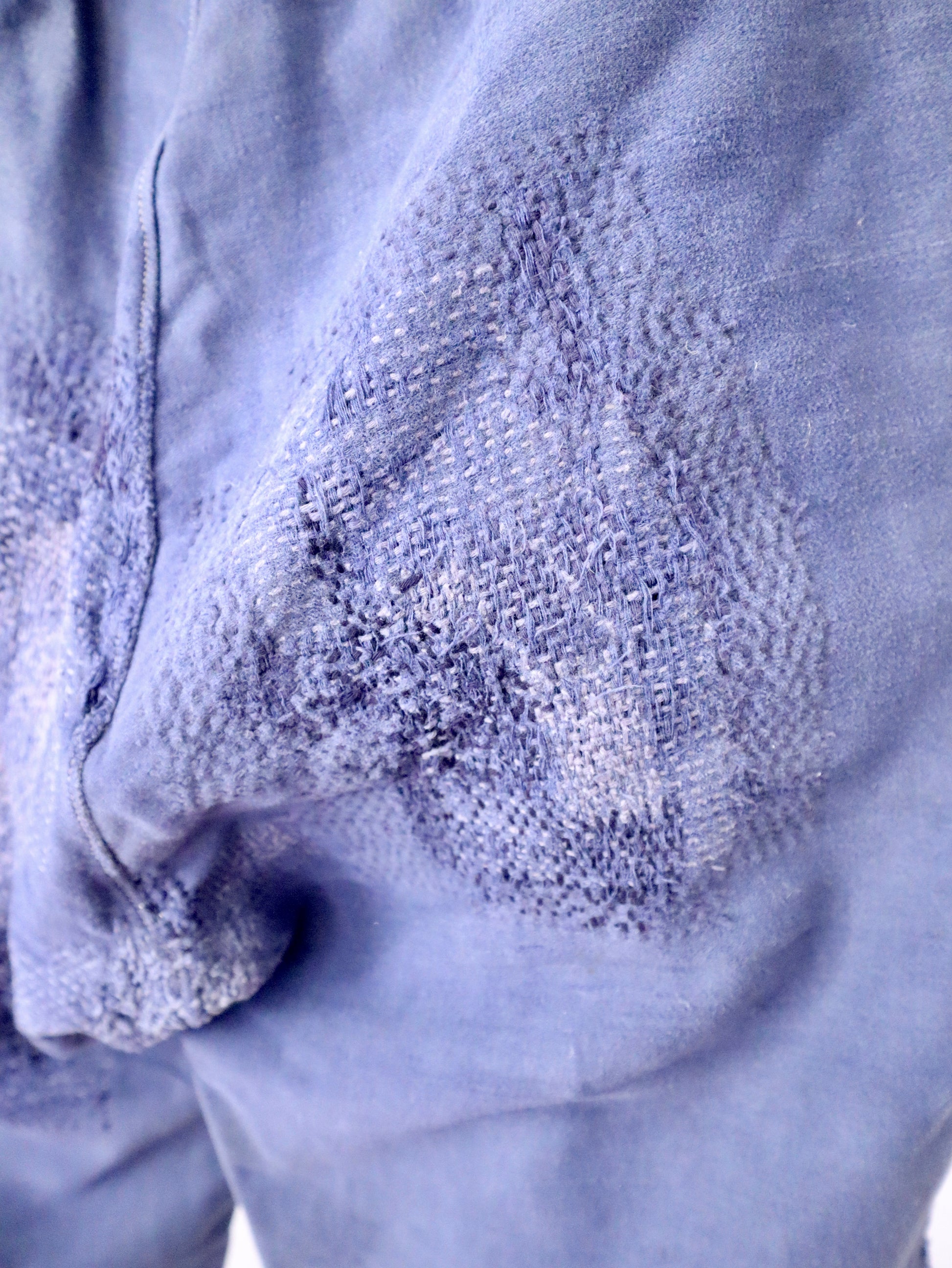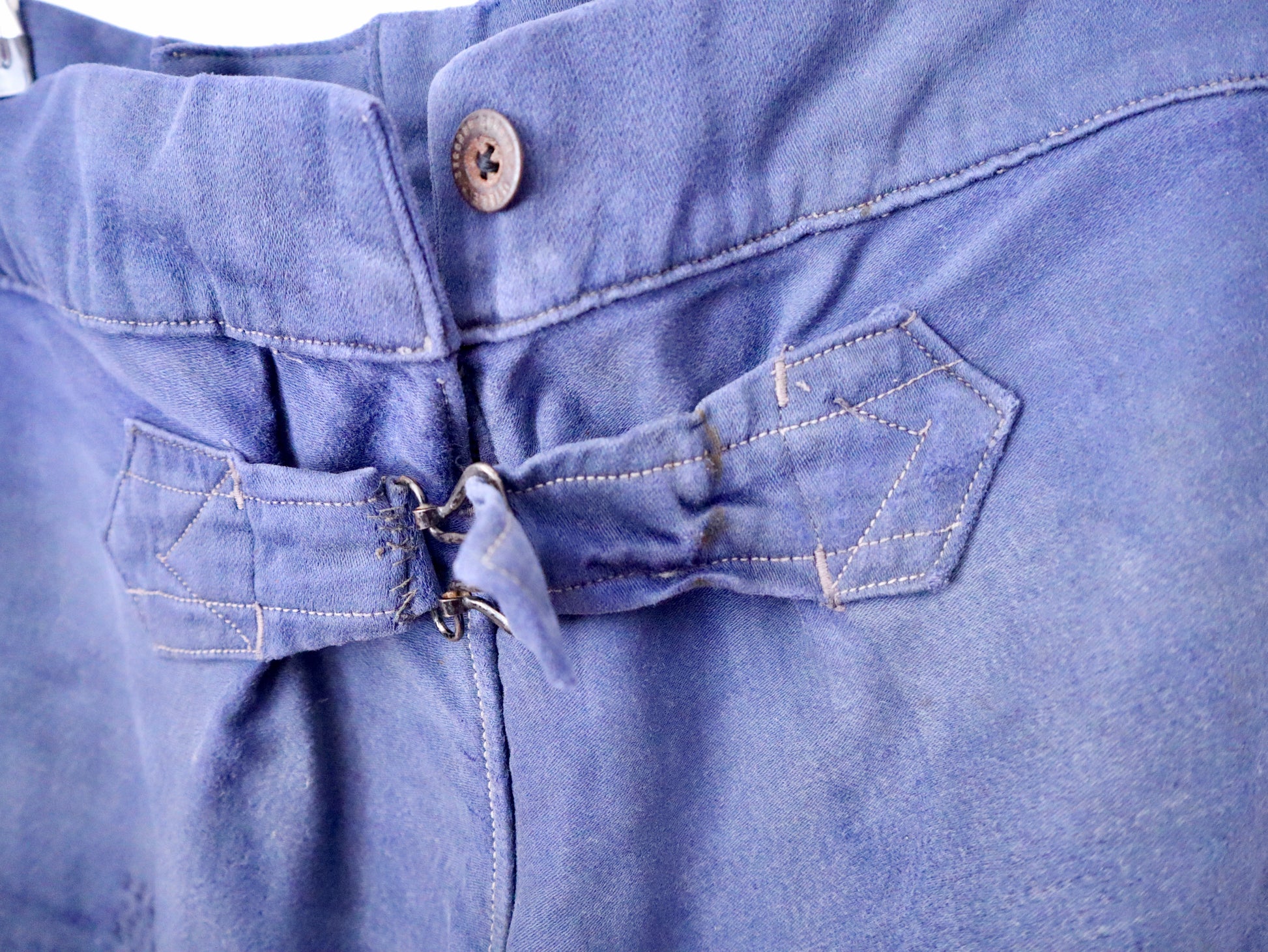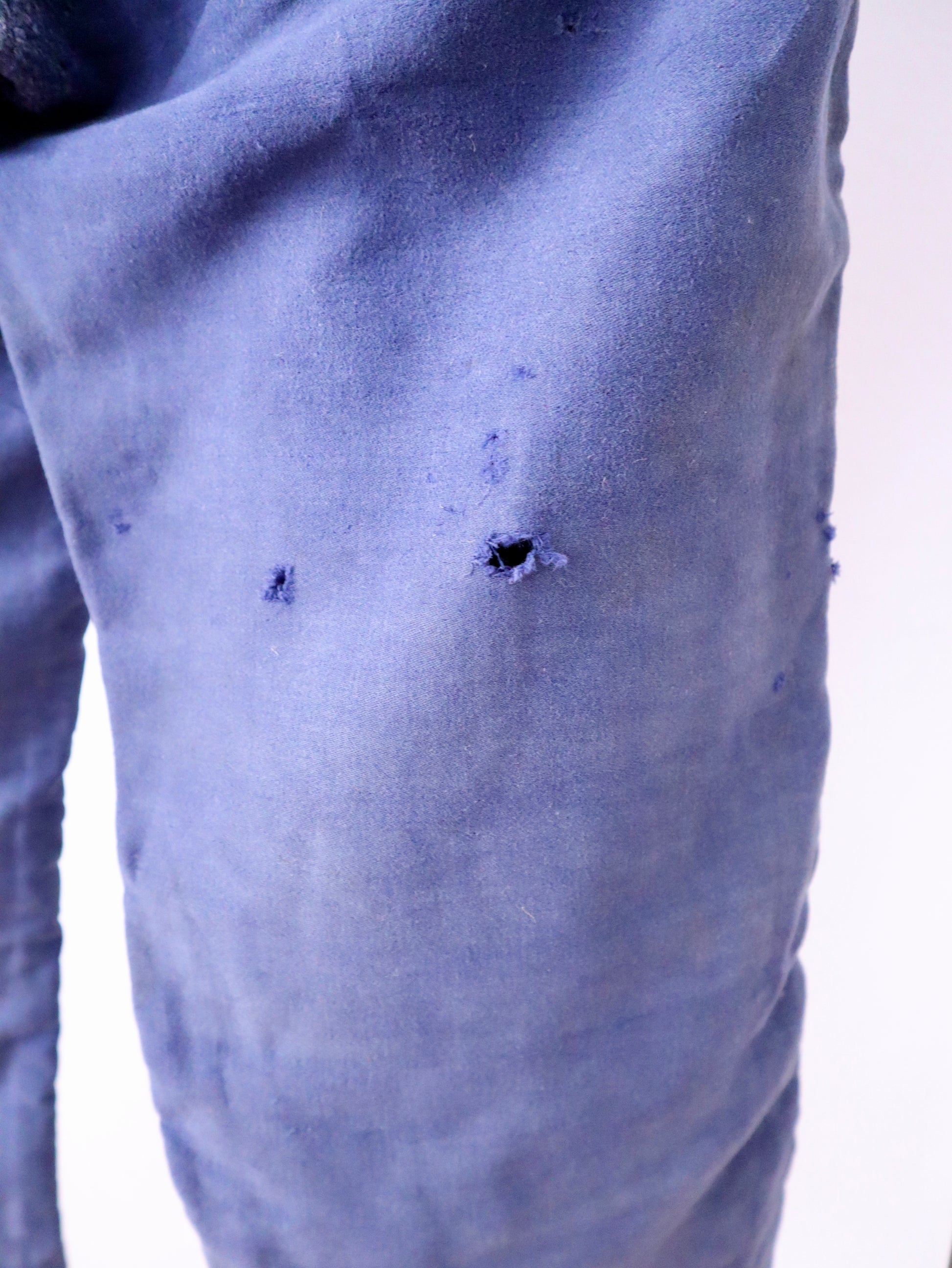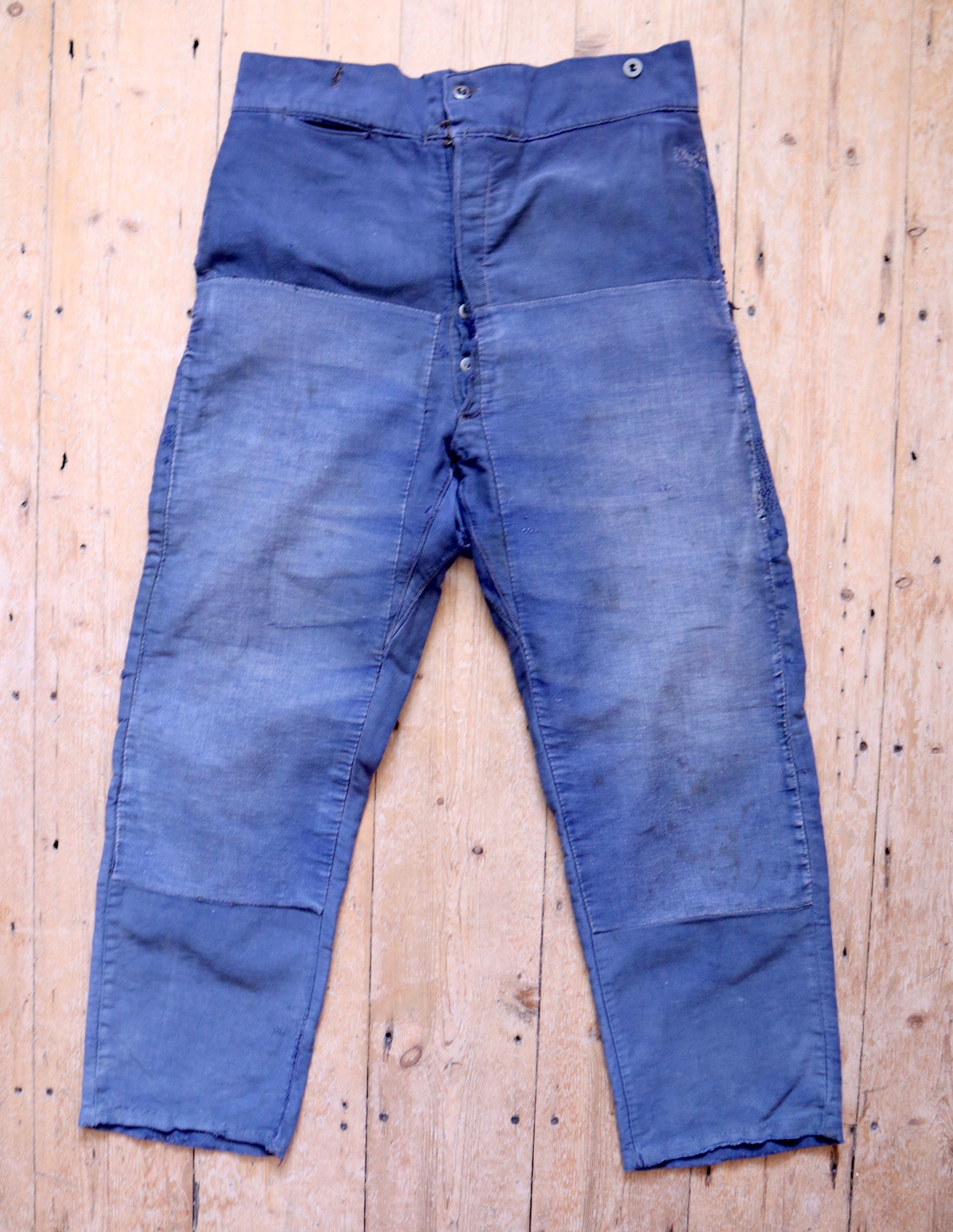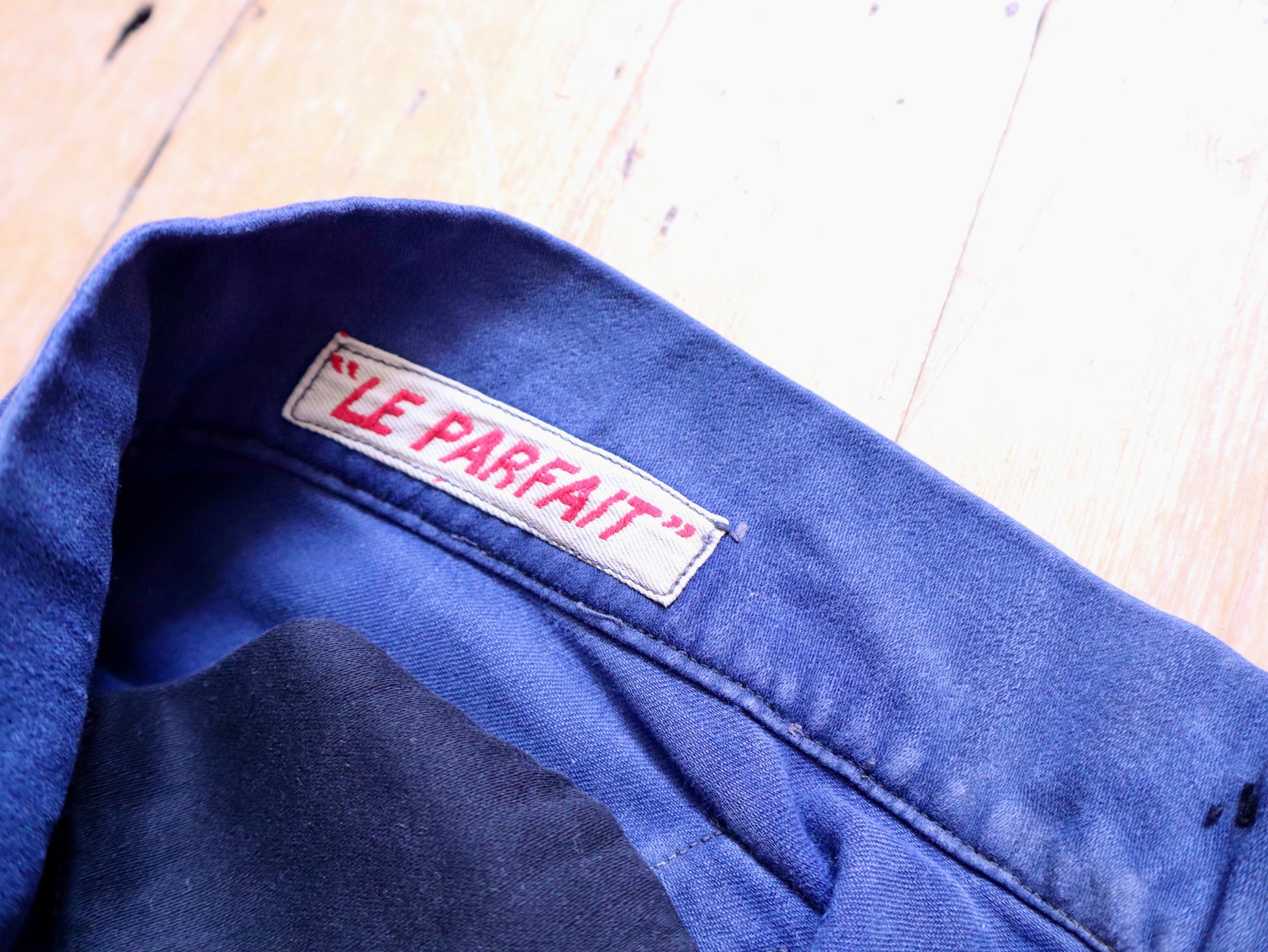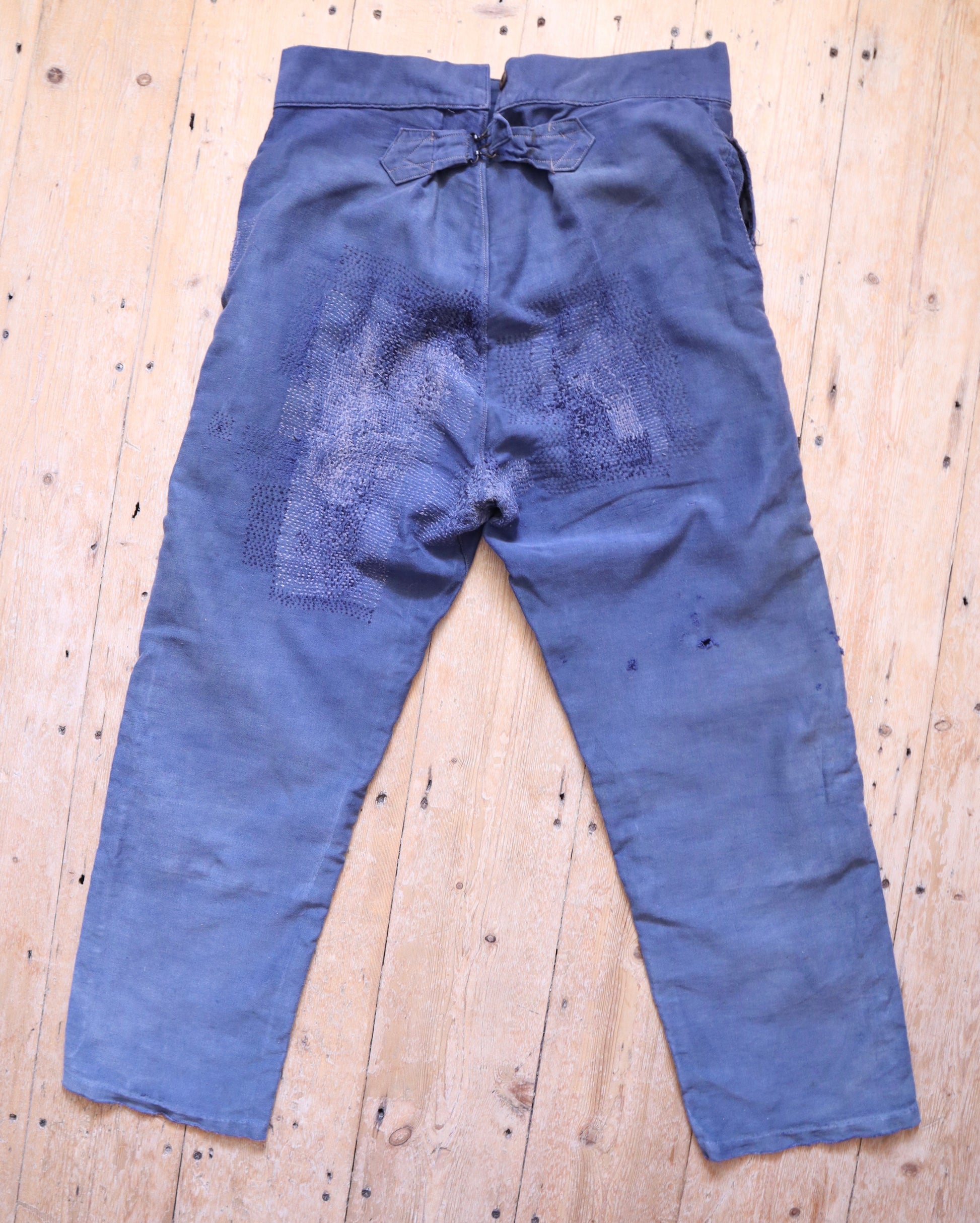Cabinet 49
1940s–1950s French Moleskin Workwear Trousers – “Le Parfait” with Patched and Darned Repairs
1940s–1950s French Moleskin Workwear Trousers – “Le Parfait” with Patched and Darned Repairs
Couldn't load pickup availability
French work trousers from the 1940s to 1950s, made from durable blue cotton moleskin. High-waisted with two hip pockets and a small inset front pocket, metal button fly, and a rear cinch-back adjuster. These trousers have seen significant wear and repair, including full-length patching on the front of both legs.
The waistband bears the original “Le Parfait” label, which translates from French as “The Perfect”. A functional and highly characterful example of mid-century French utility clothing.
Measurements (laid flat):
- Waist: 17 in / 43 cm (or 16 in / 40.5 cm with cinch fully tightened)
- Rise: 13 in / 33 cm
- Outside leg length: 40 in / 101.5 cm
- Inseam: 26 in / 66 cm
Condition:
Freshly laundered and structurally intact. The front of both legs has been extensively patched, with large repairs running from above the hips to below the knees. Darning is visible around both hip pockets and across the back, where multiple areas have been hand-repaired using different tones of thread. There are light rust-coloured stains in places, and fabric wear around the fly where a piece has worn away. Minor fraying is present at the hems. The trousers retain their shape and function, with all metal buttons intact.
A Note on French Moleskin Workwear:
Blue cotton moleskin became a standard in French workwear from the early 20th century, particularly in the 1940s and 1950s. Its dense weave and soft brushed surface made it ideal for factory, rail, and agricultural work — offering both durability and comfort. This deep blue tone was typical for labourers, while foremen often wore black or brown.
Trousers like these were built to last and frequently repaired over decades of use, which is why examples with visible mending and wear have become so valued today
